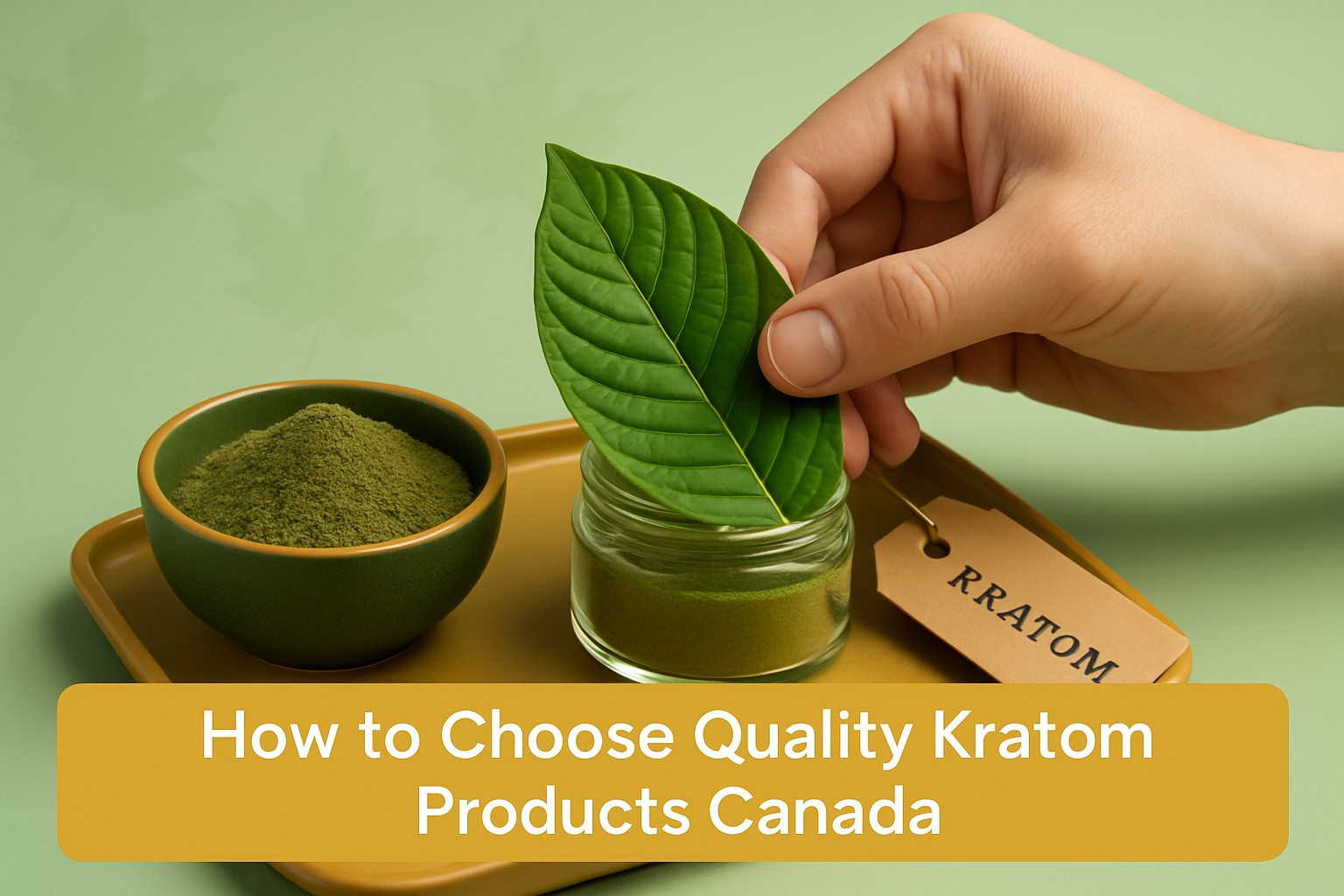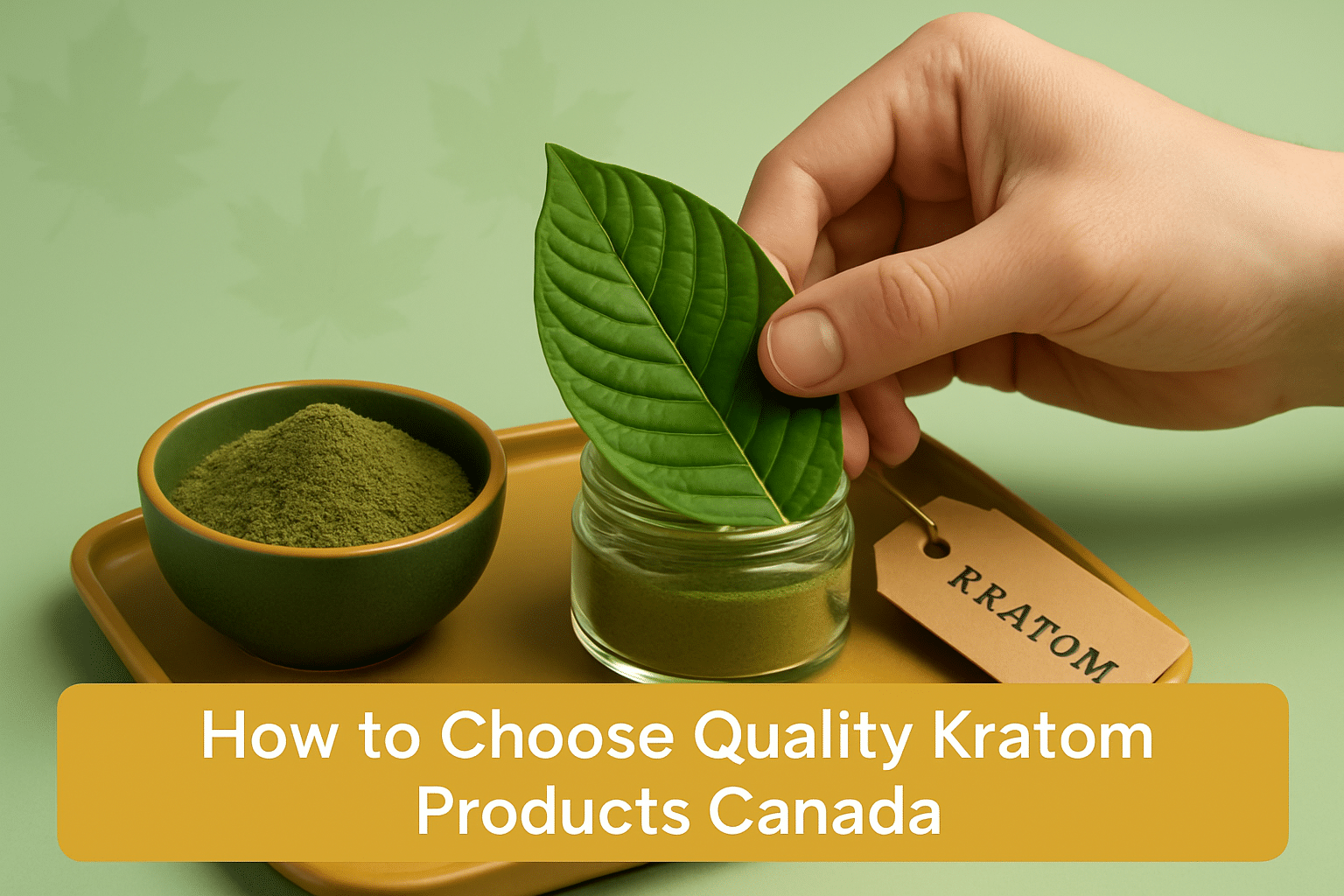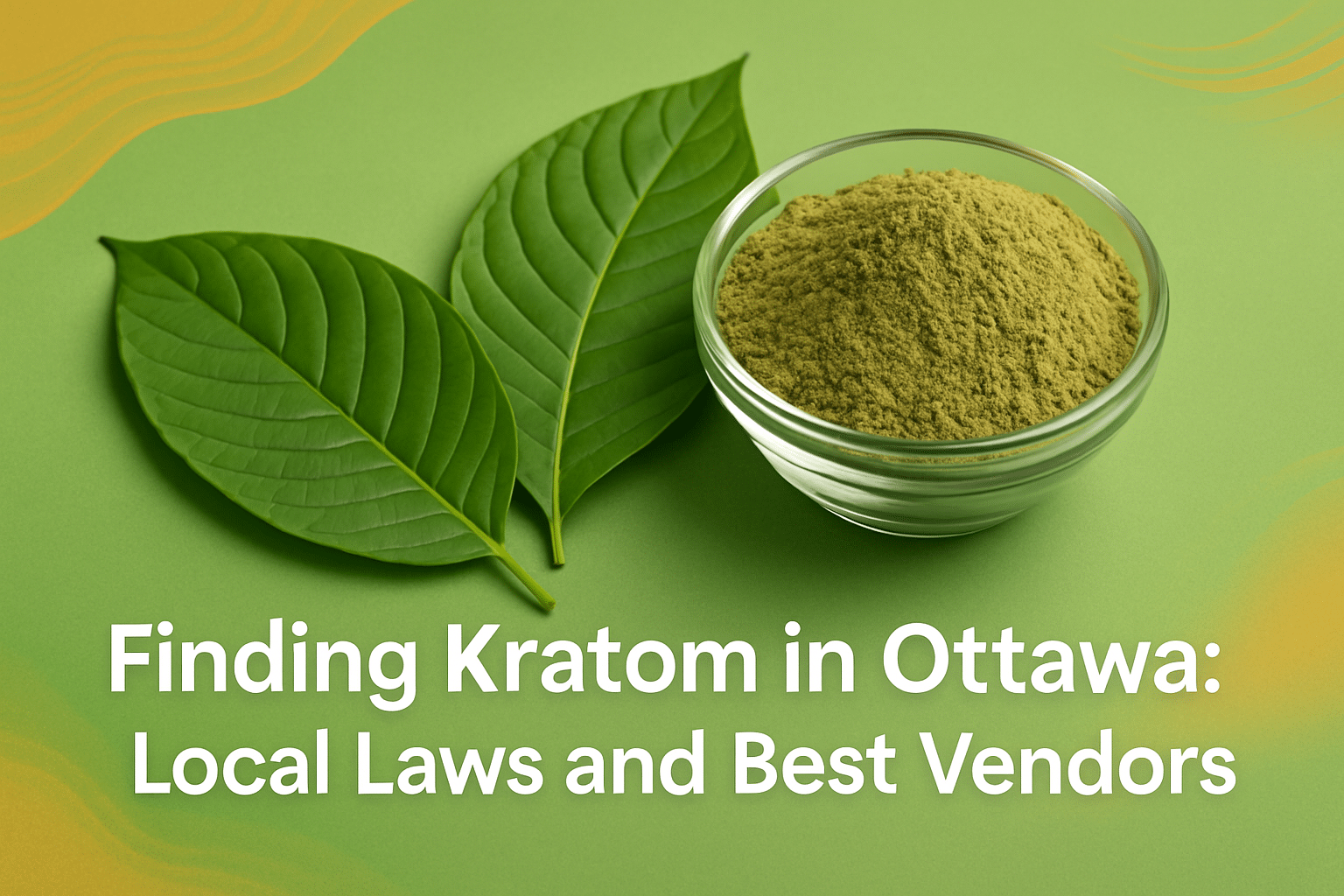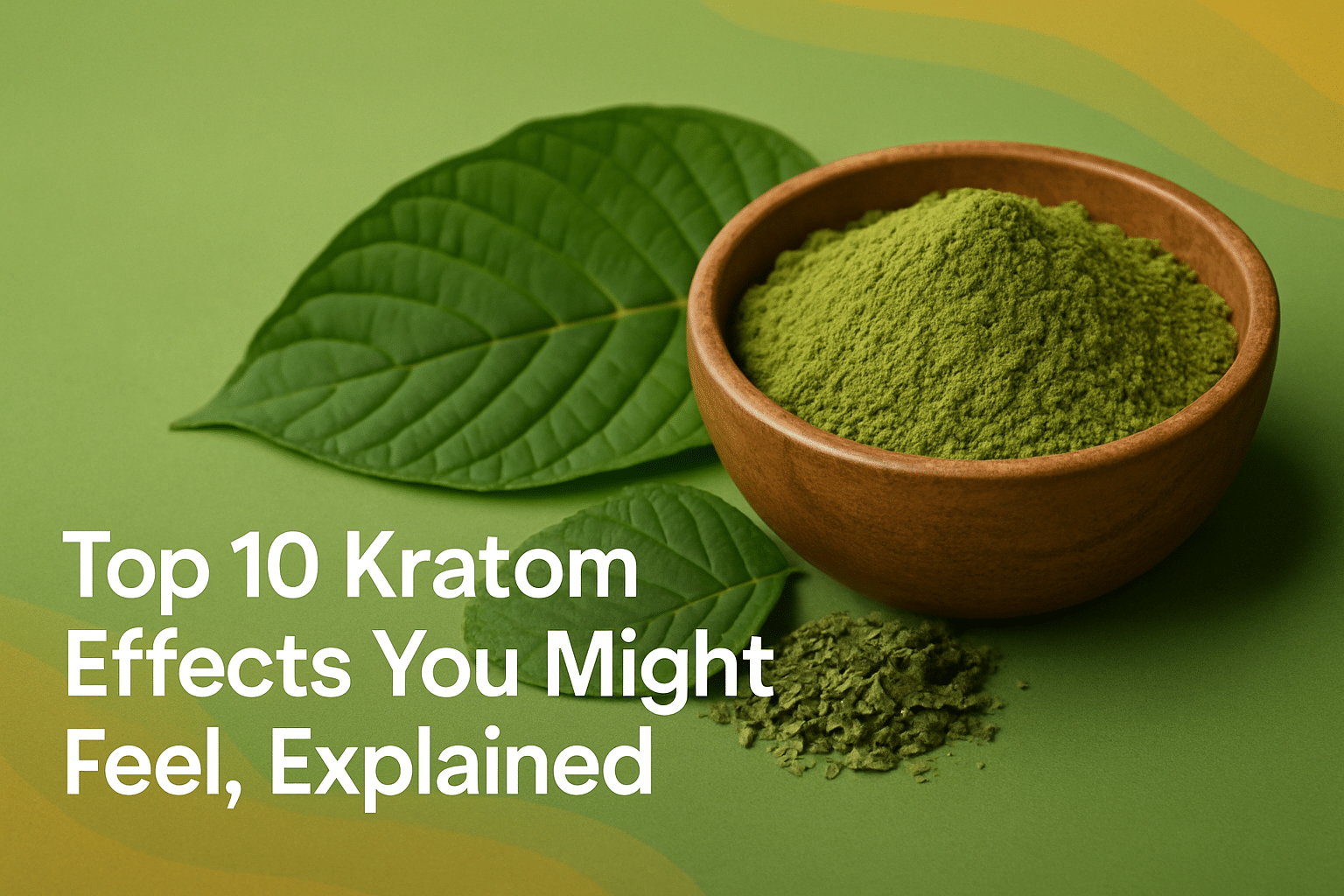
Every year, thousands of Canadians search for reliable botanical products, yet many struggle to identify truly high-grade options. With the kratom market expanding rapidly across Canada, distinguishing premium products from inferior alternatives has become increasingly challenging for consumers seeking quality kratom Canada offers.
The difference between exceptional and substandard kratom often lies in details invisible to the untrained eye. From laboratory testing protocols to proper storage methods, multiple factors determine whether you’re investing in a product that meets rigorous safety standards or one that could pose potential risks.
Understanding these quality indicators isn’t just about making informed purchases—it’s about ensuring you receive products that have undergone proper testing and meet Canadian safety requirements. The following guide explores the essential markers that separate premium kratom from questionable alternatives available in today’s Canadian market.
Essential Quality Indicators for Premium Kratom Products
Lab Testing Certificates and Purity Verification
Authentic quality kratom Canada vendors provide comprehensive laboratory documentation with every batch. Third-party lab testing protocols for heavy metals, microbials, and alkaloids became standardized requirements under AKA GMP standards following the 2019 program launch.
These certificates should detail specific testing methodologies and results. Look for documentation that includes:
-
Alkaloid content analysis showing mitragynine and 7-hydroxymitragynine levels
-
Heavy metal screening for mercury, arsenic, lead, and cadmium
-
Microbial testing covering bacteria, yeast, and mold counts
-
Pesticide residue analysis ensuring agricultural safety standards
Premium vendors make these results easily accessible, often displaying them prominently on product pages or providing them upon request. Third party kratom testing Canada requirements ensure independent verification rather than in-house results that may lack objectivity.
Proper Storage and Freshness Standards
Storage conditions directly impact potency and safety of botanical products. Gamma radiation sterilization methods preserve quality and safety, extending shelf life without introducing chemical residues that could compromise purity.
Professional storage facilities maintain:
-
Climate-controlled environments preventing moisture damage
-
UV-protected storage areas preserving alkaloid integrity
-
Sealed container systems preventing cross-contamination
-
First-in, first-out rotation ensuring product freshness
Quality vendors implement strict inventory management systems that track production dates and ensure customers receive products within optimal freshness windows. This attention to storage details separates reputable suppliers from those cutting corners on preservation protocols.
Source Verification and Supply Chain Transparency
Reputable suppliers maintain detailed documentation about their sourcing practices. This includes information about cultivation regions, harvesting methods, and transportation protocols that affect final product quality.
Transparent vendors provide:
-
Origin country specifications with regional quality indicators
-
Harvesting season information affecting alkaloid concentrations
-
Processing method details explaining preparation techniques
-
Supply chain documentation tracking product journey from farm to consumer
GMP certified kratom vendors Canada requirements include maintaining comprehensive records throughout the entire supply chain, ensuring accountability at every stage of production and distribution.
Understanding Kratom Strains and Potency in Canadian Markets
Alkaloid Content and Potency Measurements
AKA GMP certification requirements mandate testing for specific alkaloid profiles in every batch, ensuring consistent formulations across production runs. This standardization helps consumers understand what they’re purchasing and expect consistent results.
Different strains naturally contain varying alkaloid concentrations:
Red Vein Varieties:
-
Higher 7-hydroxymitragynine content for relaxation
-
Mitragynine levels typically 1.2-1.8%
-
Popular for evening use applications
Green Vein Options:
-
Balanced alkaloid profiles
-
Mitragynine concentrations around 1.0-1.5%
-
Moderate potency suitable for general use
White Vein Selections:
-
Lower 7-hydroxymitragynine, higher mitragynine
-
Energy-focused alkaloid combinations
-
Preferred for morning applications
Canadian kratom lab testing standards require documentation of these alkaloid profiles, allowing consumers to make informed decisions based on their specific preferences and intended use patterns.
Batch Consistency and Quality Control
Premium suppliers implement rigorous quality control measures ensuring each batch meets identical specifications. This consistency depends on standardized processing methods and regular testing protocols that verify alkaloid content remains within specified ranges.
Kratom batch consistency testing involves:
-
Multiple sample testing from different portions of each batch
-
Alkaloid profile verification ensuring target concentrations
-
Physical characteristic assessment checking color, texture, and aroma
-
Moisture content analysis preventing degradation during storage
365 Kratom Canada exemplifies this approach through comprehensive testing of their proprietary blends like Sunrise, Clarity, and Relax, ensuring each product maintains consistent alkaloid profiles across production runs.
Safety Considerations When Purchasing Kratom Products
Contamination Testing and Heavy Metal Screening
Modern testing facilities employ ICP-MS testing technology to screen for Mercury, Arsenic, Lead, and Cadmium below safety thresholds in Canadian products. This advanced analytical method provides precise measurements of potentially harmful contaminants.
Kratom heavy metal testing requirements in Canada focus on these primary concerns:
|
Metal |
Maximum Safe Level |
Health Impact |
|---|---|---|
|
Lead |
10 ppm |
Neurological damage |
|
Arsenic |
10 ppm |
Cardiovascular issues |
|
Mercury |
3 ppm |
Kidney dysfunction |
|
Cadmium |
5 ppm |
Respiratory problems |
Premium vendors exceed these minimum requirements, often maintaining levels well below regulatory thresholds. This extra precaution demonstrates commitment to consumer safety and product excellence.
Microbial Safety and Sterilization Protocols
Bacterial and fungal contamination poses serious health risks, particularly for individuals with compromised immune systems. Professional suppliers implement gamma radiation sterilization or other approved methods to eliminate harmful microorganisms without affecting alkaloid content.
Standard microbial testing covers:
-
Total aerobic bacteria counts below 10,000 CFU/g
-
Yeast and mold levels under 1,000 CFU/g
-
Pathogenic bacteria detection for E. coli and Salmonella
-
Aflatoxin screening preventing dangerous mycotoxin exposure
These safety protocols ensure products meet pharmaceutical-grade cleanliness standards, providing confidence in product safety for botanical research and examination purposes.
Proper Packaging and Labeling Requirements
Sealed opaque packaging systems prevent cross-contamination and maintain freshness during shipping while protecting products from environmental factors that could degrade quality.
Safe kratom packaging Canada standards include:
Physical Protection:
-
UV-resistant materials preventing light degradation
-
Moisture barriers maintaining optimal humidity levels
-
Tamper-evident seals ensuring product integrity
-
Child-resistant closures meeting safety requirements
Information Requirements:
-
Batch numbers enabling traceability
-
Production and expiration dates
-
Alkaloid content specifications
-
Proper botanical classification and disclaimers
Quality vendors invest in professional packaging that preserves product integrity throughout the distribution process, ensuring customers receive products in optimal condition.
Verifying Kratom Lab Results Authenticity
Learning to interpret laboratory certificates protects consumers from fraudulent documentation. Legitimate test results contain specific technical details and reference standards that verify authenticity.
Key verification points include:
-
Laboratory accreditation numbers confirming facility credentials
-
Specific testing methodologies detailing analytical procedures
-
Quality control standards showing reference materials used
-
Certificate dates matching product batch information
Verifying kratom lab results requires understanding these technical elements and recognizing when documentation appears incomplete or potentially falsified. Reputable suppliers welcome questions about their testing procedures and provide detailed explanations of their quality assurance processes.
Maximizing Value and Avoiding Common Purchasing Mistakes
Price vs Quality Balance and Budget Planning
Premium testing protocols and quality control typically result in products costing 20-30% more than basic alternatives due to rigorous safety investments and comprehensive laboratory analysis. Understanding this price differential helps consumers evaluate whether apparent bargains truly represent value.
Consider these cost factors when evaluating quality kratom Canada options:
Testing and Certification Expenses:
-
Third-party laboratory analysis fees
-
GMP certification maintenance costs
-
Regular batch testing requirements
-
Quality control system implementation
Premium Storage and Handling:
-
Climate-controlled facility operations
-
Professional packaging materials
-
Inventory rotation systems
-
Contamination prevention protocols
Smart consumers recognize that slightly higher upfront costs often translate to superior safety profiles and more consistent results, making premium products better long-term investments.
Recognizing Red Flags and Inferior Products
Several warning signs indicate potentially problematic suppliers or substandard products. Avoiding these red flags protects consumers from safety risks and disappointing purchases.
Common warning indicators include:
-
Missing or incomplete lab documentation
-
Unusually low prices suggesting corner-cutting
-
Vague product descriptions lacking specific information
-
Poor packaging with inadequate sealing or labeling
-
Limited contact information making customer service difficult
Alkaloid content testing Canada standards require specific documentation that legitimate vendors readily provide. Suppliers unable or unwilling to share this information often lack proper quality control measures.
Building Relationships with Trusted Suppliers
Establishing connections with reputable vendors provides access to consistent quality products and reliable customer support. Trusted suppliers invest in long-term customer relationships rather than pursuing short-term profits through inferior offerings.
Benefits of vendor relationships include:
-
Product consistency across multiple orders
-
Educational resources about botanical applications
-
Priority customer service for questions and concerns
-
Advance notification about new products or testing updates
365 Kratom Canada builds these relationships through transparent communication, comprehensive testing documentation, and products like Uplift and Goodnight that demonstrate consistent quality across their entire product line.
Legal Compliance and Provincial Regulations
Kratom legal compliance provinces vary significantly across Canada, requiring consumers to understand local regulations before making purchases. Responsible vendors maintain current knowledge of these requirements and ensure their products meet applicable standards.
Key compliance considerations include:
-
Provincial import restrictions affecting product availability
-
Age verification requirements for online purchases
-
Labeling mandates specifying botanical disclaimers
-
Distribution limitations governing where products can be sold
Understanding these regulatory frameworks helps consumers make informed decisions while supporting vendors who prioritize legal compliance and responsible business practices.
Quick Reference: Quality Kratom Checklist
|
Quality Indicator |
What to Look For |
Red Flags to Avoid |
|---|---|---|
|
Lab Testing |
Third-party certificates, detailed alkaloid profiles |
Missing results, vague documentation |
|
Packaging |
Sealed, UV-resistant, properly labeled |
Poor sealing, missing information |
|
Pricing |
Competitive but not suspiciously low |
Extremely cheap products |
|
Customer Service |
Responsive, knowledgeable support |
Limited contact options |
|
Documentation |
Batch numbers, expiration dates |
Incomplete or missing details |
This checklist provides a practical tool for evaluating potential suppliers and ensuring purchases meet appropriate quality standards for botanical research and examination purposes.
FAQs
What makes third party kratom testing Canada more reliable than vendor testing?
Third-party testing provides independent verification without financial conflicts of interest. These laboratories follow standardized protocols and maintain accreditations that ensure objective, accurate results. Vendor testing, while useful, may lack the independence necessary for complete objectivity in quality assessment.
How can I verify that GMP certified kratom vendors Canada actually maintain their certifications?
Check the American Kratom Association’s official vendor list and verify certification numbers directly with the certifying organization. Legitimate vendors provide easily verifiable certification documentation and welcome inquiries about their compliance status. Be suspicious of vendors who can’t provide specific certification details.
What are the most important alkaloid content testing Canada requirements I should know about?
Canadian standards require testing for mitragynine and 7-hydroxymitragynine levels in each batch. Quality vendors provide detailed alkaloid profiles showing these concentrations, typically ranging from 1.0-1.8% for mitragynine and 0.01-0.05% for 7-hydroxymitragynine, depending on strain variety and processing methods.
How do kratom heavy metal testing requirements protect consumer safety?
Heavy metal testing screens for mercury, arsenic, lead, and cadmium contamination that could cause serious health problems. Canadian requirements set maximum safe levels for each metal, with quality vendors often maintaining levels well below these thresholds to ensure additional safety margins for consumers.
What should proper gamma radiation kratom sterilization accomplish without damaging quality?
Gamma radiation sterilization eliminates harmful bacteria, mold, and other microorganisms without introducing chemical residues or significantly affecting alkaloid content. This process extends shelf life while maintaining product potency and safety, making it the preferred sterilization method for quality kratom Canada suppliers.
Conclusion
Finding quality kratom Canada requires understanding the complex factors that separate premium products from inferior alternatives. From comprehensive laboratory testing to proper storage protocols, multiple elements contribute to product excellence and consumer safety.
The investment in properly tested, professionally handled botanical products pays dividends through consistent results and peace of mind regarding safety standards. By focusing on these quality indicators and avoiding common red flags, Canadian consumers can confidently navigate the market and find suppliers who prioritize excellence.
Quality vendors understand that transparency and rigorous testing protocols build trust with discerning customers. This approach benefits both consumers seeking reliable products and the industry’s overall reputation for maintaining high standards.
Ready to experience the difference that comprehensive testing and quality control make? Explore 365 Kratom Canada’s Multipack Deals to discover premium botanical products that meet the highest Canadian safety and quality standards.



